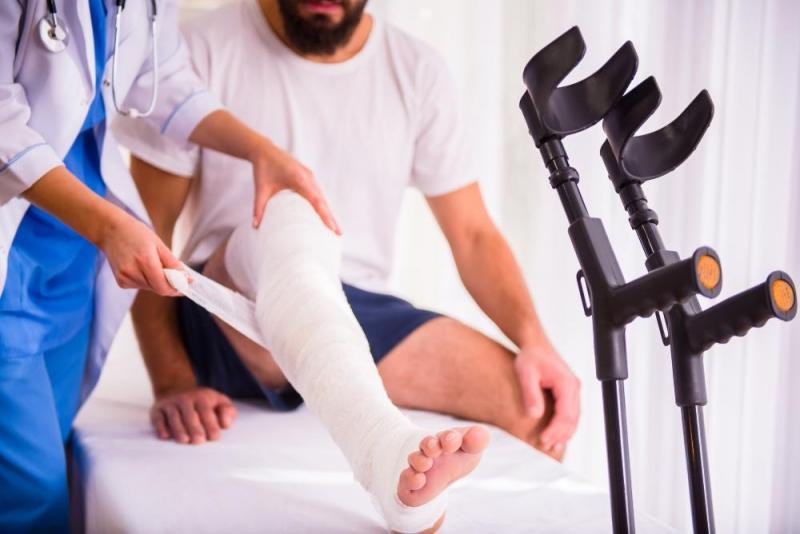5 Steps to Rehabbing Your Work-Related Injury

Going to work is supposed to mean making money that improves your quality of life. However, an injury might take you in the opposite direction. Rehabbing after an injury on the job can be a frustrating process, but there are steps you can follow to make it easier.
5 Steps To Rehabbing Your Injury
Your immediate steps following a work-related injury should be fairly obvious. Execute them as quickly as you can. Be sure you're covered for potential workers' compensation, make sure your supervisor is notified promptly, have your primary care physician look you over, and follow through with your employer.
Once you start rehab, there are usually five steps of work-related injury rehab.
- Protection/Offloading: The first step is protecting your injury from getting any worse. Offloading simply recognizes your body has an inability to use certain parts for a while.
- Protected Reconditioning/Reloading: At some point, a little strain has to be applied to an injured area. This might be an early part of physical rehab. Trust your medical team to decide when and what load will apply.
- Strength Conditioning: The rest of your body isn't injured. Your physical therapist might have you maintain the proper conditioning of the rest of your physique.
- Return to Work: You might not be 100% where you were before your injury before you go back to work. However, once you are mentally and physically prepared enough, you'll get back to your shifts.
- Preventing Another Injury: Unfortunately, suffering any injury increases the chances of it happening again or going through a related injury.
You Might Need To Get A Case Manager
What is Industrial Rehabilitation? Industrial rehabilitation is a specific form of rehab with the singular focus of getting you back to work. If you're unable to work at all due to your injury, then you might not be collecting a paycheck. Personal emergency leave and sick days might cover some of your downtimes, but those can run out before you're ready to start earning a living again.
In industrial rehab cases, you might be assigned a case manager. This is a medical professional who monitors every moving part of your personal circumstances. They might treat you personally, but they'll make sure that you have a comprehensive care team that provides you with the best care that you can hope to get. In the best circumstances, you'll get a case manager that you can trust with your concerns and questions. You're most likely to get a case manager if you wind up in a rehabilitation center or hospital.
Bouncing Back From An Injury
NPR has good advice on bouncing back from sports injuries that can also frequently apply to work-related injuries.
- Don't Ignore Your Feelings: You're going to have negative emotions. Acknowledge them, and then let them go.
- Change the Narrative: Changing how you talk to yourself during your recovery can have a documented impact on your recovery time and how fast you get back to work.
- Don't Rush Things: No matter how badly you want to get back to making money, the more you rush the process, the longer it might take because you're risking setbacks.
- Try New Things: A new hobby might pass your time, but you might also develop new skills you can use to advance your career.
- Utilize Your Support Network: Many people who are injured unfortunately find out that not all their friends and family are as supportive as they could be. Some are too busy, and others just won't really be there. Once you know who is, use them when you need to. Know when to ask for help and who you can trust.
Stay Calm, You Will Get Better
A work-related injury usually does more than just interrupt your capacity to work. Many such injuries also impact your ability to enjoy life outside of your job. No matter how slowly it might seem like things are going, do about your rehab properly so you can get your quality of life back right and with minimal risk of injuring yourself again.
More to Read:
Previous Posts:








